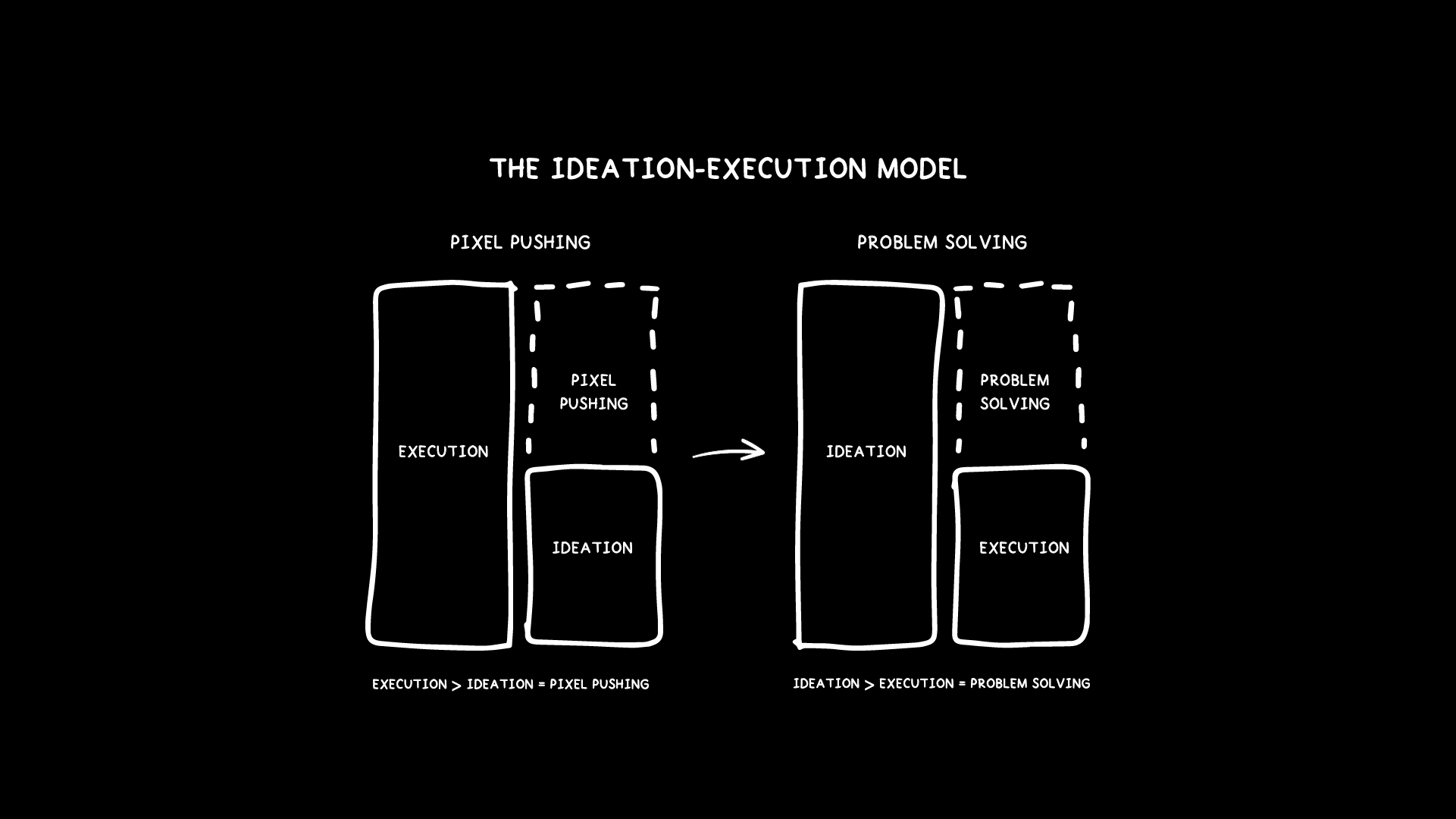Stop pushing pixels, start solving problems.
Preparation is the Foundation of Great Design
Einstein once said, “If I had an hour to solve a problem, I’d spend 55 minutes thinking about the problem and five minutes thinking about solutions.”
His point was simple: preparation is the key to effective problem-solving. Yet, many designers do the opposite—they rush into execution without fully understanding the problem they’re solving.
The best way to create an effective logo isn’t to start designing right away—it’s to prepare first. Without a solid foundation, designers fall into the trap of pixel pushing—tweaking details endlessly without clear direction.
The more time spent understanding the problem upfront, the less time is wasted in revision cycles, unnecessary iterations, and second-guessing design choices.
Here’s how you can move from Pixel-Pusher to Problem-Solver:
Value Your Time – Work smarter, not longer. Focus on what moves the project forward instead of tweaking endlessly.
Start with Strategy, Not Software – Think before you design. A strong strategy leads to stronger logos.
Execute with Clarity – Every decision should serve a purpose, reducing unnecessary revisions.
Read more to discover how you can make changes to your workflow…
The Ideation-Execution Model
The Ideation-Execution Model
While Einstein’s 90/10 ratio was an anomaly, it serves as a useful guide for how we should allocate our time—prioritizing deep thinking, discovery, and strategy before moving into execution.
When you spend more time defining the problem, the execution becomes clear, faster, and more precise.
This concept ties into Deliberate Focus—a structured, intentional approach to thinking—and Cognitive Load—the mental effort required to process information. The more cognitive effort we apply upfront in the ideation phase, the less strain and inefficiency we face in execution.
To move from being a pixel pusher to a problem solver, designers need to shift their focus. Instead of spending excessive time tweaking visuals, they must dedicate more deliberate focus to ideation—understanding the brand, identifying key challenges, and strategizing the best approach. Execution should be the result of a well-thought-out process, not a trial-and-error exercise.
A designer who prioritizes ideation over execution will make smarter decisions, reduce unnecessary revisions, and create more intentional, meaningful logos.
Value Your Time
Just as we only have 24 hours in a day, we also have a limited amount of time to complete a project. The success of a design is not measured by the number of hours put in, but by what is actually accomplished within those hours.
Many designers fall into the belief that working longer equals better results. But more time doesn’t always mean better work—it often leads to wasted effort (Law of Diminishing Returns).
The key is working smarter, not longer.
A successful project isn’t about how long you worked on it. It’s about how effectively you used your time.
Focus on what moves the project forward.
Set time constraints for ideation and execution.
Recognize when “good enough” is actually great.
When you start treating your time as your most valuable resource, you’ll make better decisions and avoid the trap of endless refinement.
Start with Strategy, Not Software
Before jumping into software, take a step back. Ask yourself:
What problem am I solving?
Too often, designers rush into execution without truly understanding the purpose behind their work. This leads to excessive revisions, misalignment with the client’s needs, and a longer, inefficient design process overall.
Instead, spend more time in the discovery phase:
Understand the brand’s core identity.
Identify recurring themes in the brand’s story.
Define the purpose behind the logo.
Strategic preparation leads to stronger, more meaningful designs that require fewer revisions. A well-prepared designer is a more efficient designer.
Execute with Clarity
Once you’ve established a solid strategy, execution becomes clearer and more intentional. Every design choice should be backed by logic, not guesswork.
Set clear goals for your design experiments.
Avoid getting lost in unnecessary details.
Ensure every element has a purpose.
Clarity in execution leads to greater confidence in your work and, ultimately, stronger final results. The more preparation you put in, the less time you waste fixing avoidable mistakes.
Conclusion
Shifting from a pixel-pusher to a problem-solver is about rethinking your approach. Preparation is everything. When you take the time to deeply understand the problem, you avoid unnecessary iterations, wasted effort, and inefficient workflows.
Great design isn’t about endless hours of tweaking—it’s about making the right decisions before execution even begins. In doing so, you save so much time and creative energy.
“Preparation leads to clarity. The more effort you put into understanding the problem, the less effort you’ll waste fixing the wrong solution.”


